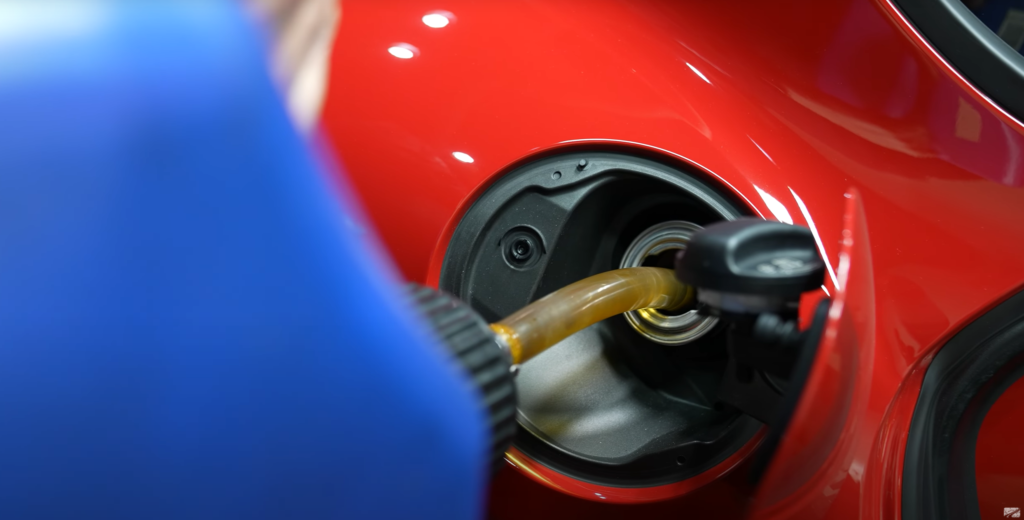Editorial | News : March 5, 2022
E85 Flex Fuel
Counter to how it may sound, Flex Fuel is unfortunately not the newest fitness supplement to hit the market. However, it is a key technology that can aid you and many others in utilizing E85 fuel in your vehicle. If you’ve recently read our latest E85 fuel overview article then you may be left wondering how exactly you can set your vehicle up to take advantage of all of the great benefits that E85 has to offer. With Flex Fuel technology this is easier than ever before to take advantage of all the benefits that ethanol-based fuels have to offer. Join us as we peel back the cob on what Flex Fuel is and how it can help in adding performance to your ride!
What is Flex Fuel?
Traditionally, if you were looking to operate your vehicle on a fuel other than what it was designed for, such as E85 or racing fuel, you would have to not only install the correct components to support that fuel, but also would have to change your vehicle’s tune to one that is calibrated specifically for that fuel type. While this may sound simple enough, this process of ensuring that you have fully drained your existing fuel, filled with the new fuel, and then successfully changed your tune can become cumbersome and annoying over time. With Flex Fuel technology you can now switch from standard gasoline to E85 fuel, or any mix of the two, on the fly without the need for monitoring your ethanol content or having to store and flash multiple tunes.
The way that Flex Fuel can provide this level of simplicity is by using a sensor installed on the vehicle to transmit information back to the engine control unit (ECU) telling it what the ethanol content of the fuel is at that given time. Once the ECU has determined the ethanol content, it can then make changes to the vehicle’s calibration in real time to compensate for that fuel type. To actual sensor(s) used to determine ethanol content in a vehicle will vary based on the vehicle type, but there are two primary strategies for gathering this information.
Flex Fuel Sensors
The first strategy is to use a Flex Fuel sensor that is installed in-line with the vehicle’s fuel system. The sensor has an inlet and outlet in which fuel from the tank can flow through, and the sensor can detect the ethanol content of that fuel as it passes through. The sensor then has a direct line of communication to the ECU which can then interpret that signal into ethanol content.
Because the fuel is flowing directly through the sensor this is by far the most accurate and effective method of interpreting ethanol content. This is the standard method used in many GM vehicles as well as used in many aftermarket Flex Fuel kits. Unfortunately, not every vehicle or ECU can support this type of system, so an alternative method called inferred Flex Fuel is required.
Check out of this method of Flex Fuel conversion, as used on A90 Supra, in the video below!
Inferred Flex Fuel
For vehicles that are unable to support an external Flex Fuel sensor, the option for inferred Flex Fuel may be available. The strategy of inferred Flex Fuel relies on oxygen sensors placed in the vehicle’s exhaust system to return information back to the ECU that can then be interpreted into an ethanol content. While this may sound confusing at first, the method is actually quite simple. As exhaust gasses pas by the oxygen sensor(s), they will send back a voltage signal to the ECU. The voltage signal that is sent back will vary based on the air/fuel mixture in the engine at that time. Because E85 and gasoline have very different stoichiometric values (ideal ratio of air and fuel to support combustion), the voltage readings will be very different when each fuel is applied. The ECU can then use this information to determine what fuel is in the vehicle at that time and adjust the calibration accordingly.
While this method may sound better due to its lack of additional parts, the fact is that it is not the most accurate way of determining ethanol content and should be implemented with caution. Inferred Flex Fuel is a reactionary strategy meaning that it takes some time for the engine to run before the sensors will pick up the change in signal and have time to make the necessary calibration changes. Also, other mechanical variables that cause changes in air/fuel mixture, including something as simple as an exhaust leak, can cause improper oxygen sensor readings that can lead to an improper change in the vehicle’s tune.
Check out our Inferred Flex Fuel calibration for Ford Mustang in the video below!
Flex Fuel Conclusion
With the growing popularity of E85 and the huge performance benefits that result from using it, it is easy to see why Flex Fuel technology is extremely beneficial in vehicles that want to utilize this fuel type. Not only is the process of switching between pump gasoline and E85 made easier than ever, but there is also a large safety benefit available. Traditionally E85 tunes will run much more aggressive parameters that can be dangerous when lower octane fuel is in place. In instances where a bad batch of E85 with an unexpectedly low ethanol content may enter your fuel tank, a flex fuel sensor can be an engine-saver by softening the tune based on the actual content realized by the sensor. For this reason, we believe that Flex Fuel technology is a critical piece for any vehicle using ethanol-based fuels.
If you enjoyed this article and would like to learn more about the specific Flex Fuel system applicable to your vehicle, or if you would like to schedule an appointment for a Flex Fuel install and tuning session, then give our team of performance consultants a call today!

